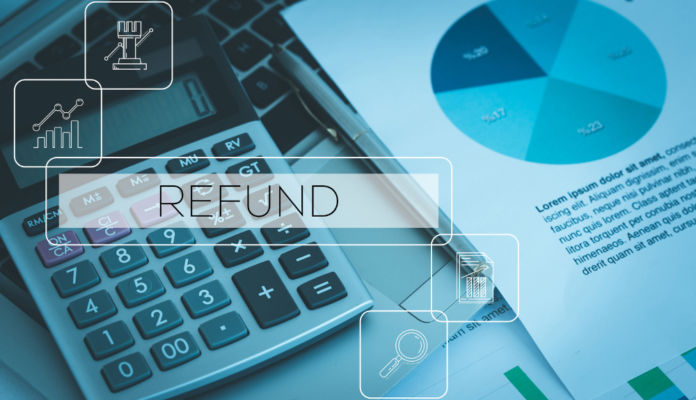During the COVID-19 pandemic, the government introduced the Employee Retention Credit (ERC), a beneficial tax incentive designed to encourage firms to keep their personnel. Employers who continued to pay their workers despite a considerable drop in revenue as a result of the epidemic are eligible for the credit.
However, the procedure for requesting a refund on an ERC can be tedious, and it would be unwise to make any mistakes along the way. In this piece, we’ll go over some of the most frequent blunders that companies make when requesting ERC refunds, and offer advice on how to avoid making them yourself. Recognizing these common blunders and taking precautions to avoid them will help you get the maximum ERC return to which you are entitled.
Not making sure you qualify

Determining whether or not your company satisfies the prerequisites is essential to the ERC refund application process. For wages paid to qualifying employees between March 13, 2020 and December 31, 2021, qualifying companies are entitled to a refundable tax credit of up to $7,000 per employee every quarter. Many companies, however, waste time and energy by making the incorrect eligibility judgments.
The following conditions must be met by your company in order to receive an ERC refund:
- You must have seen a considerable drop in total sales. A substantial drop in gross receipts is required for a company to be eligible for an ERC refund. If your business’s quarterly gross receipts in 2020 or 2021 fall below 50% of the comparable quarterly gross receipts in 2019, you are eligible for an ERC refund. For more information, visit here.
- There must have been a government order suspending all or part of your company’s operations. You may be entitled to a reimbursement of ERC fees if the government ordered the temporary or permanent closure of your company. You might be eligible for an ERC refund, for instance, if COVID-19 regulations caused the closure of your business.
- You need less than 500 workers to qualify. In 2019, your company’s headcount needed to be under 500 for you to be eligible for an ERC refund.
Many companies incorrectly assess their eligibility for ERC reimbursement, despite the fact that the standards are quite clear. Some frequent errors made by companies are:
- The failure of a business to meet the gross receipts threshold is a typical blunder. It’s possible for companies to either incorrectly assess their gross sales or significantly underestimate the loss.
- Because of a misunderstanding of the government order requirement, some companies can miss out on ERC refunds while they are entitled to them. The government orders in place at the time your company was restricted due to COVID-19 should be reviewed.
- Some companies may falsely believe they are qualified for an ERC refund because they employ fewer than 500 people, but this is only the case if they utilize an inaccurate counting method. For instance, they might be misclassifying part-timers as full-timers.
Here are some things to keep in mind so that your application for an ERC refund is error-free in terms of eligibility:
- Carefully examine the prerequisites to see if you qualify: If you want your firm to receive an ERC refund, you should make sure you meet all of the criteria.
- Maintain precise records of all financial transactions, personnel headcount, and regulatory regulations affecting your company.
- If you want to make sure you qualify and don’t make any mistakes that could cost you money, you might want to consult a tax expert or accountant.
Overestimating the Amount You Can Get Back in Credit

Businesses need to take extra care to avoid making any mistakes when calculating the ERC refund amount, as this is a required step in the credit claim procedure. Incorrectly estimating the value of a credit is a typical error made by businesses. Businesses already experiencing financial difficulties may suffer as a result of missed opportunities to receive the largest possible return.
Businesses must compute the maximum credit amount per employee for each quarter based on the eligible salaries and healthcare expenditures paid to each employee during the period in order to estimate the ERC refund amount. However, errors are common when calculating the credit amount, since companies may forget to factor in all qualified earnings, misinterpret the average wage requirement, or use the wrong payroll periods. To avoid these errors, firms should maintain precise records, observe the proper payment dates, and get expert help when needed.
The entire ERC refund to which a company is entitled can be obtained by avoiding calculating errors.
Not Having Adequate Proof of Eligibility or Credit Amount

Correctly documenting eligibility and the amount of the credit is essential in obtaining the ERC return. To prove eligibility for the ERC and support the stated credit amount, firms must provide the aforementioned paperwork. Many organizations, however, make mistakes in this area that lead to delays in refunds, penalties, and other undesirable outcomes.
Documentation errors may be costly to businesses, therefore it’s important that they keep thorough records of everything that has to be documented. Documentation showing that all ERC eligibility requirements have been met, as well as records of pay and healthcare expenses paid to each employee. If a company claims COVID-19 government orders caused a drop in revenue, for instance, it must provide evidence that sales dropped or that operations were halted in whole or in part.
Failing to file by the due date
One common error companies make when attempting to obtain an ERC refund is waiting until the last minute to file. In order to receive the maximum refund, the IRS has established firm deadlines by which businesses must submit their credit claims.
Businesses can avoid this oversight by keeping track of when the filing deadlines are and promptly submitting their claims. While businesses have until May 31, 2021 to submit their claims for the 2020 tax year, they must do so by the end of each succeeding quarter. Claim submission deadlines for the first quarter of 2021 were July 31, 2021, and the second quarter of 2021 are October 31, 2021.
Failing to consult an expert

The belief that they can get by without expert assistance because they are a small firm or because they are conversant with tax law is another typical blunder made by companies. However, the area of tax law surrounding the ERC refund is complex, and firms may benefit from having outside assistance in claiming the credit.
Any company, regardless of size or expertise with tax rules, should consider hiring a specialist to help them avoid making this common error. Businesses can benefit from expert assistance since it increases the likelihood that they will submit a claim that is both complete and eligible for the largest possible refund.
Conclusion
Mistakes in the ERC refund application procedure can prevent businesses from receiving the full refund to which they are entitled. However, businesses can boost their chances of collecting the full amount of ERC return they are entitled to if they are aware of the usual mistakes businesses make and take efforts to avoid them.
These five errors are discussed in this article so that organizations can:
- Check their qualifications for the ERC return and make sure they qualify.
- Make sure the credit is calculated accurately.
- The credit amount and eligibility must be properly documented.
- Make sure to submit their claims before the due date.
- If help is needed, professional help should be sought.
Businesses can improve their chances of collecting their full ERC refund by avoiding the most common pitfalls and by following these guidelines to ensure they meet all documentation and eligibility requirements.
The ERC return is a potential boon for companies seeking to recoup financial damages sustained during the pandemic. By avoiding typical pitfalls and making use of this credit, firms can improve their financial standing and boost their chances of long-term success.








